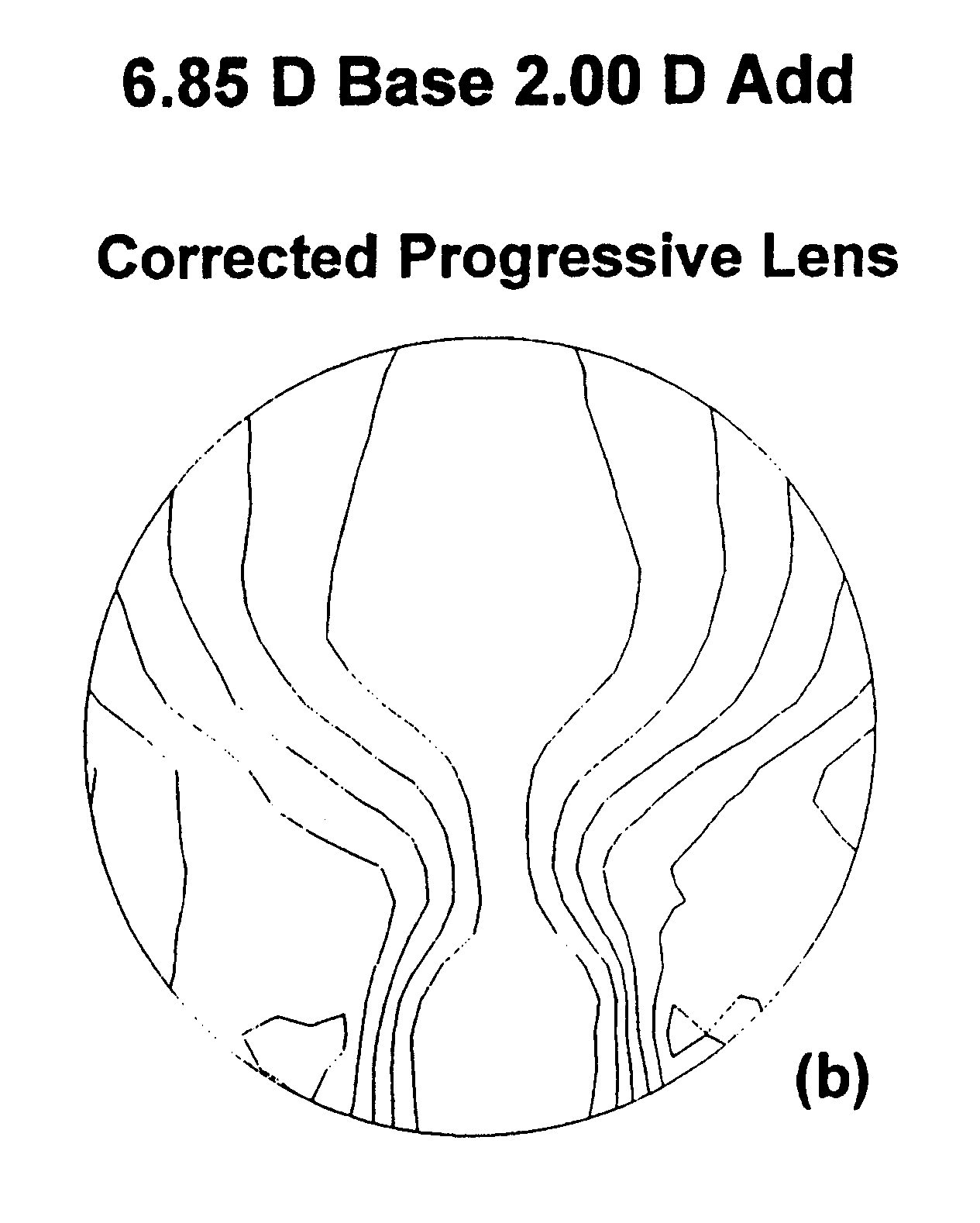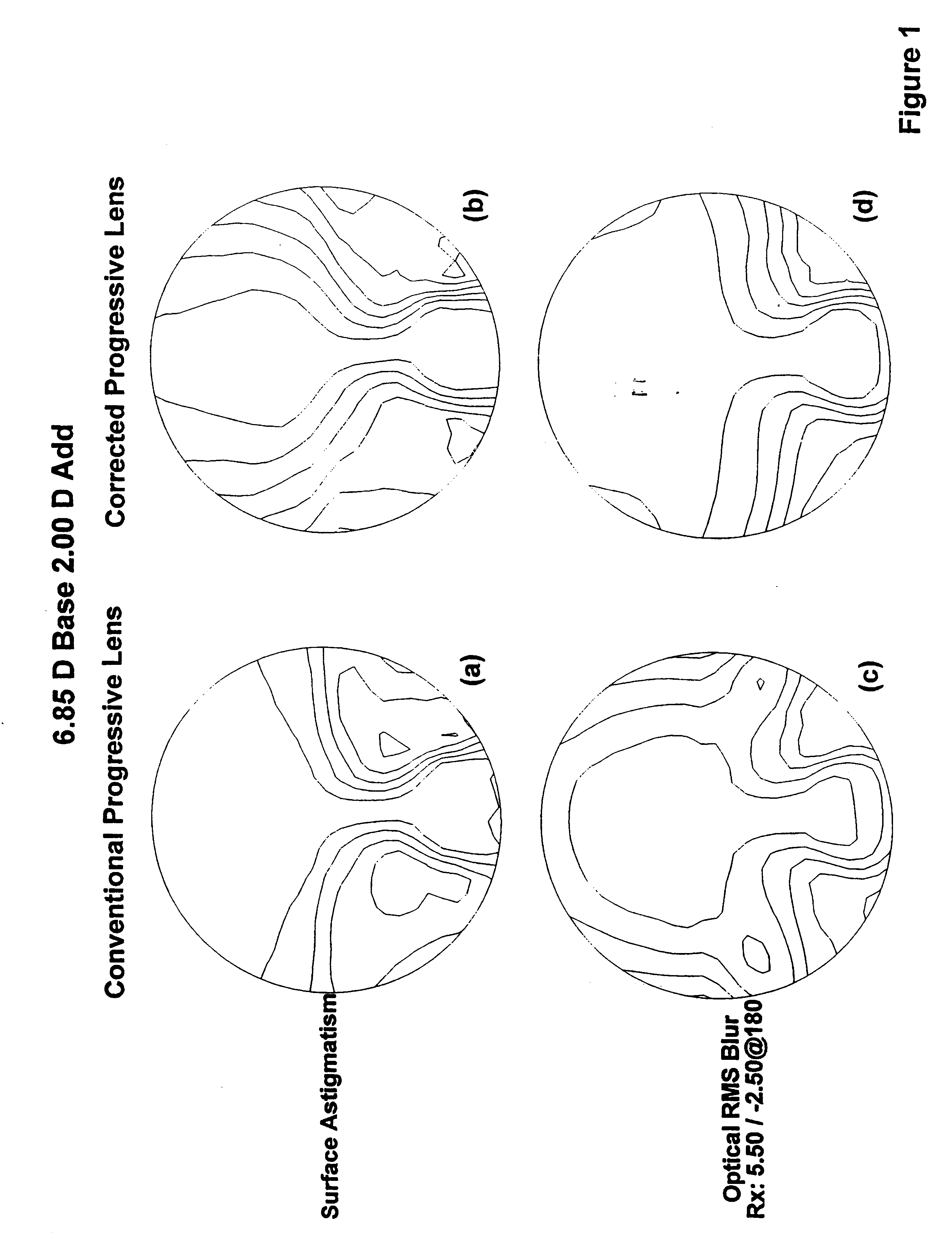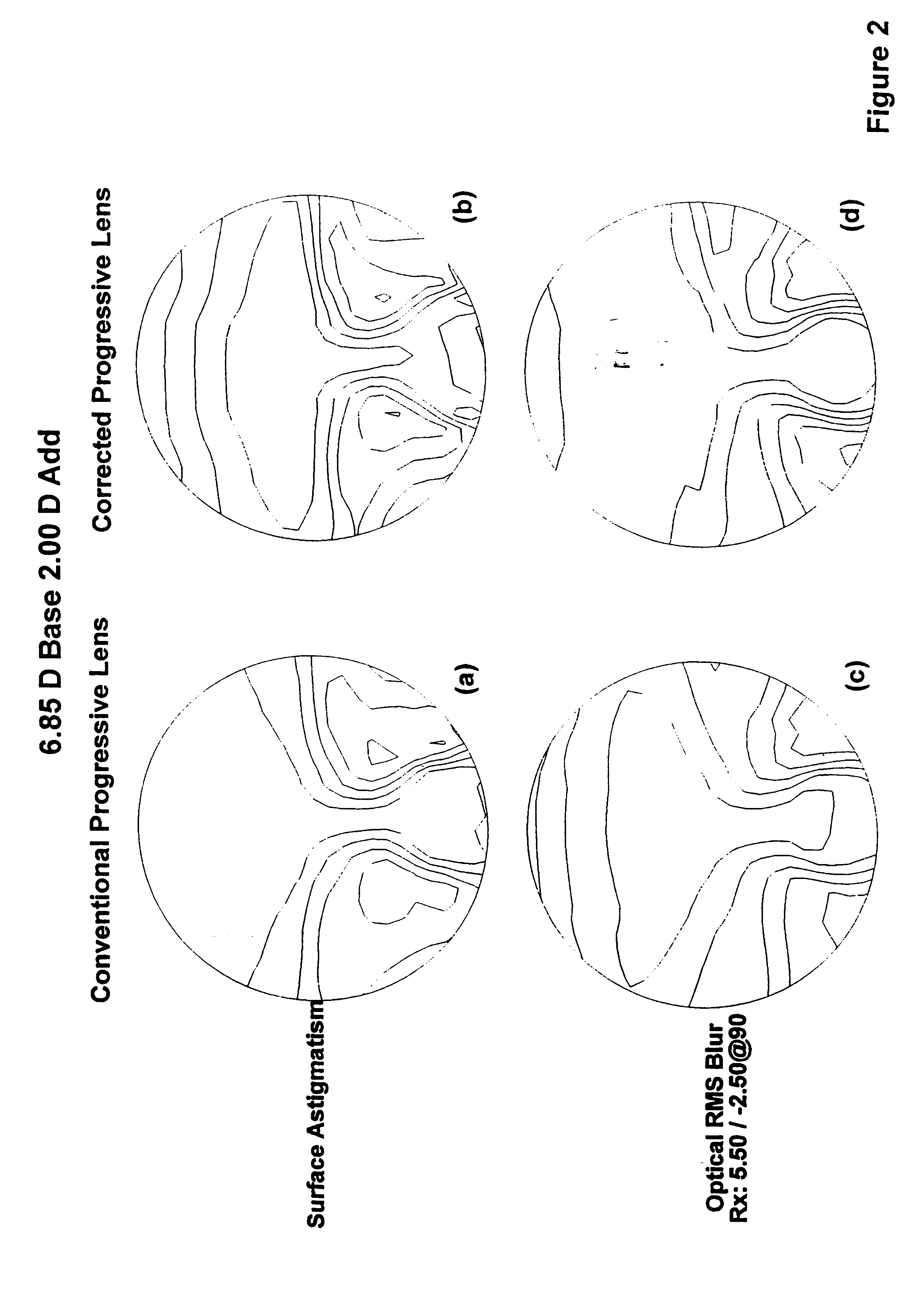Progressive lens
a technology of progressive lenses and lenses, applied in the field of progressive lenses, can solve the problem of not being able to vary with the specific optical requirements of the individual wearer, and achieve the effect of improving the optical performance of the lens element and low astigmatism
- Summary
- Abstract
- Description
- Claims
- Application Information
AI Technical Summary
Benefits of technology
Problems solved by technology
Method used
Image
Examples
Embodiment Construction
The present invention will now be more fully described with reference to the accompanying examples. However, it should be understood that the following description is illustrative only and should not be taken in any way as a restriction on the generality of the invention described above.
FIGS. 1 and 2 compare a conventional progressive lens and the progressive lens corrected according to the present invention for the -2.50 D cylinder prescription at two cylinder axis orientations, namely 180.degree. and 90.degree. respectively.
FIG. 3 shows a comparison of optical RMS blur contour plots of a conventional progressive lens and a progressive lens optimised for the -2.50 D at 180.degree. of cylinder. In particular, FIGS. 3(a) and 3(c) show the conventional progressive with values of prescription -2.00 D and -3.00 D of cylinder respectively. FIGS. 3(b) and 3(d) show the progressive lens in accordance with the present invention for the same prescription values where the front surface is the...
PUM
 Login to View More
Login to View More Abstract
Description
Claims
Application Information
 Login to View More
Login to View More - R&D
- Intellectual Property
- Life Sciences
- Materials
- Tech Scout
- Unparalleled Data Quality
- Higher Quality Content
- 60% Fewer Hallucinations
Browse by: Latest US Patents, China's latest patents, Technical Efficacy Thesaurus, Application Domain, Technology Topic, Popular Technical Reports.
© 2025 PatSnap. All rights reserved.Legal|Privacy policy|Modern Slavery Act Transparency Statement|Sitemap|About US| Contact US: help@patsnap.com



